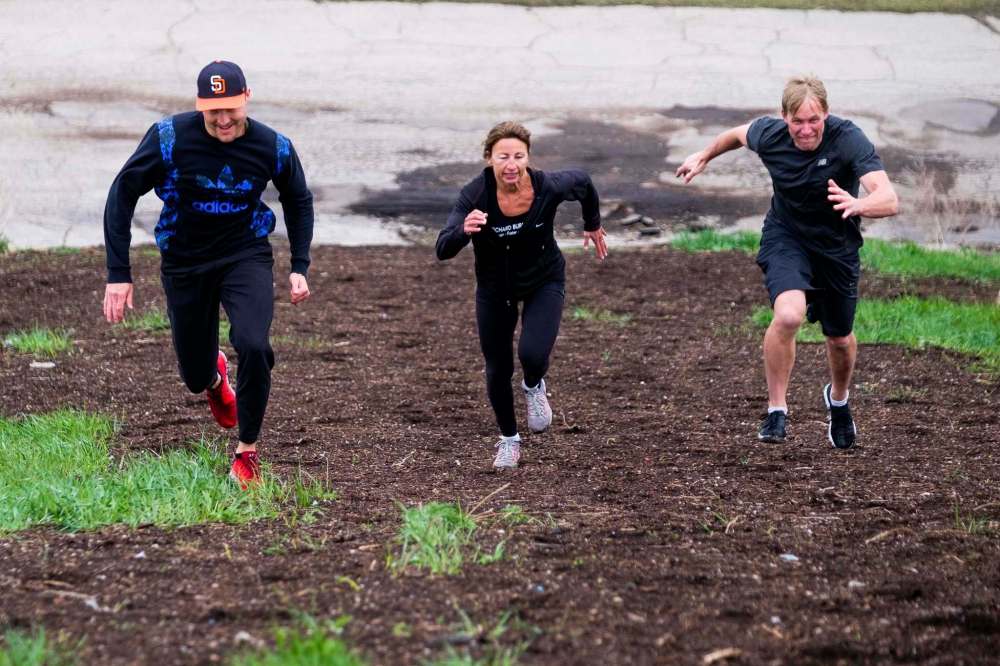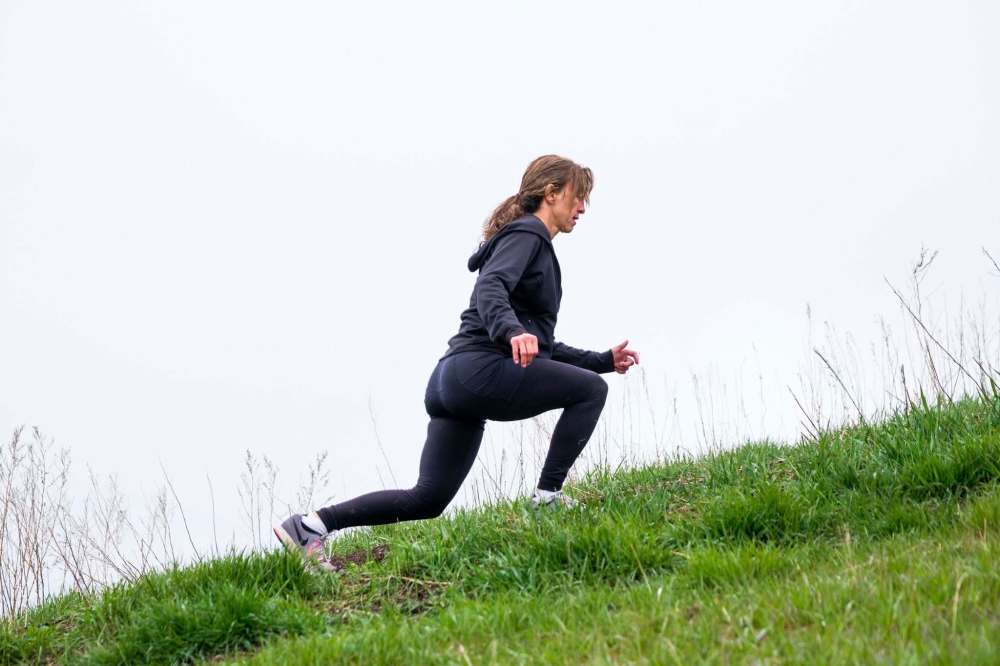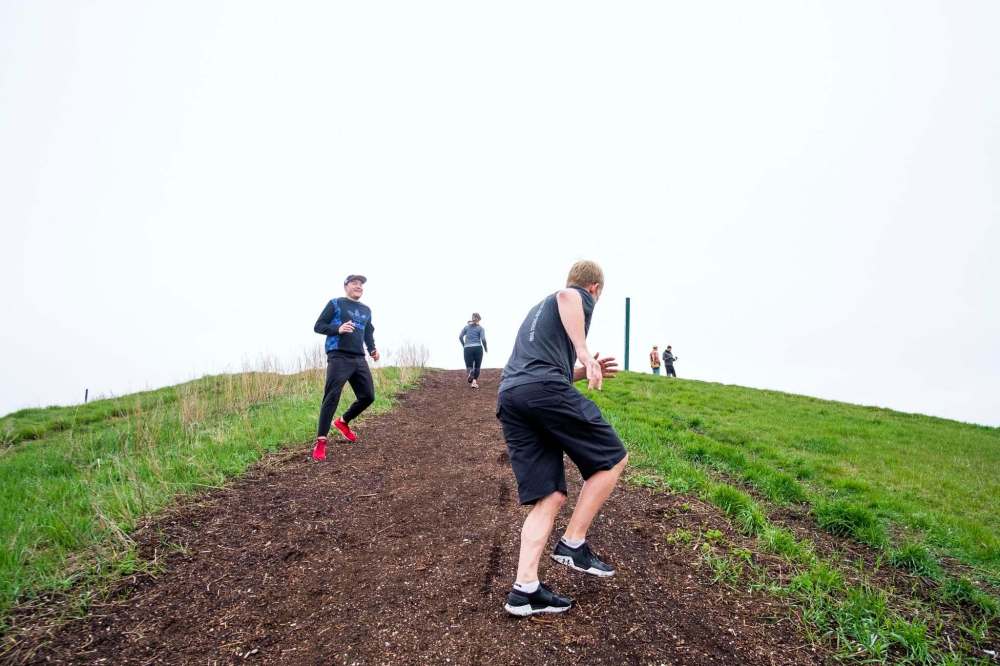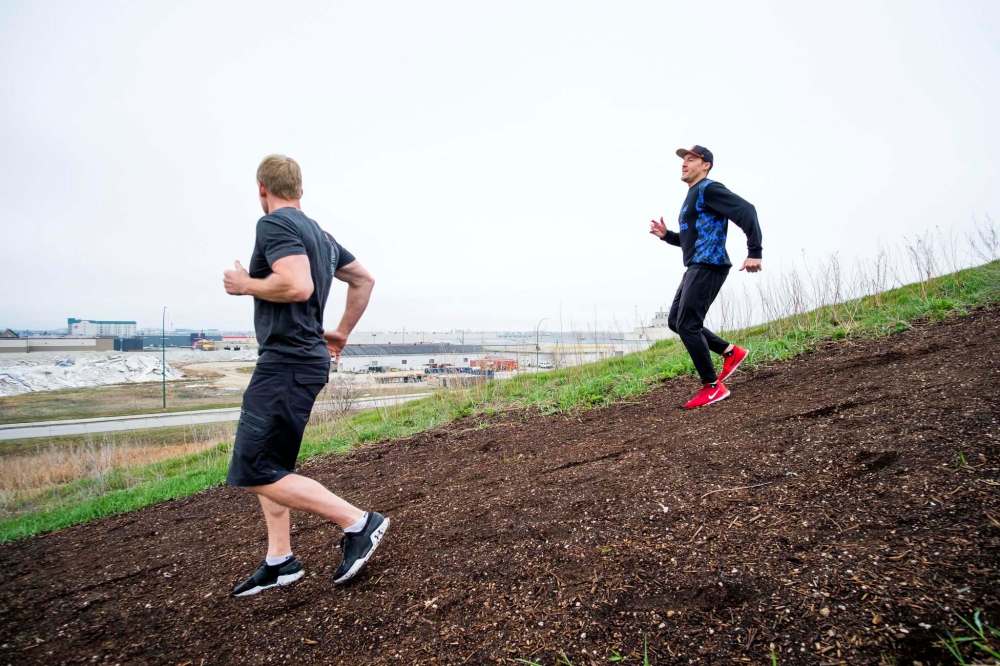Where there’s a hill, there’s a way
Has your workout routine reached a plateau? Running up and down inclines will give you a boost
Advertisement
Read this article for free:
or
Already have an account? Log in here »
To continue reading, please subscribe:
Monthly Digital Subscription
$1 per week for 24 weeks*
- Enjoy unlimited reading on winnipegfreepress.com
- Read the E-Edition, our digital replica newspaper
- Access News Break, our award-winning app
- Play interactive puzzles
*Billed as $4.00 plus GST every four weeks. After 24 weeks, price increases to the regular rate of $19.00 plus GST every four weeks. Offer available to new and qualified returning subscribers only. Cancel any time.
Monthly Digital Subscription
$4.75/week*
- Enjoy unlimited reading on winnipegfreepress.com
- Read the E-Edition, our digital replica newspaper
- Access News Break, our award-winning app
- Play interactive puzzles
*Billed as $19 plus GST every four weeks. Cancel any time.
To continue reading, please subscribe:
Add Winnipeg Free Press access to your Brandon Sun subscription for only
$1 for the first 4 weeks*
*$1 will be added to your next bill. After your 4 weeks access is complete your rate will increase by $0.00 a X percent off the regular rate.
Read unlimited articles for free today:
or
Already have an account? Log in here »
Hey there, time traveller!
This article was published 27/05/2019 (2303 days ago), so information in it may no longer be current.
Winnipeg will never be mistaken for the Rockies but that doesn’t mean you can’t incorporate hill training into your workout program. Whether you’re a long-distance runner or a weightlifter, running up and down hills has loads of benefits to make you stronger, faster and a more efficient athlete.
But there’s no sugar-coating it — running hills is hard. And finding the motivation to go for a run can sometimes be an uphill battle in itself. However, hill training is one of the most efficient ways to build speed and strength and can take your performance to the next level.
So where do you run hills outdoors in Winnipeg? Easy. Garbage Hill.

Garbage Hill, otherwise known as Westview Park or even just “the dump,” is a surprisingly busy spot for people looking to either put a little spring in their step or put themselves through the ringer. Located at the corner of Empress Street and Wellington Avenue north of Polo Park shopping centre, it’s one of the only outdoor spots in the city with any elevation.
Richard Burr, owner of Richard Burr Fitness, located just steps away from Garbage Hill, has been taking his clients to run hill sprints for years.
“When you start running on a hill, it’s like resistance training in the gym,” says Burr. “A hill is more taxing on your muscles and cardiovascular system.”
If you spend a few weeks hill training, the next time you run on a flat surface, you’ll be shocked at how much you’ve improved, he says. And your tolerance for strenuous runs and your overall stamina will also see a big jump.
“If you can run hills, it’ll make running on a flat surface seem easier,” he says. “And that means you’ll be able to run faster and for a longer period of time.”
For more than 15 years, the former athletic therapist with the Winnipeg Blue Bombers has been one of the most sought-after strength and conditioning specialists in Winnipeg. And he’s built up quite the clientele, training the who’s who of amateur and professional athletes, including NHLers Mark Stone, Ryan Reaves, Brendan Leipsic, Dustin Penner and Cody Eakin.
“Whether you’re playing soccer, lacrosse, hockey or running marathons, hill training covers it all,” says Burr. “It’s very effective at providing someone with a tool to improve their athletic and physical performance as it strengthens the lower body.”
Running inclines builds muscle in your calves, quads, hamstrings and glutes and strengthens those areas more than running on flat ground. It also helps build endurance and develops explosive muscle strength.
Cheryl Conklin has been training with Burr for three years. At 55 years of age, Conklin spends her summers inline speed skating, mountain and road biking and training for cyclocross. In the winter, she cross-country skis and rides a fat bike. Oh, and did I mention she’s completed four triathlons?

She says running uphill has given her cardiovascular training a significant boost.
“You can do some really good sprint training (on Garbage Hill), which is important for all the sports I’m involved with,” she says. “And it’s helped build strength and power in my legs.”
When running uphill, you’re working against gravity and propelling forward on an incline. This means the muscles in your hips and legs are forced to contract more powerfully while supporting your body weight. As a result, your leg muscles have to work harder to drive your movement.
For Conklin, what she’s noticed most is how much it’s helped her prepare for cyclocross, which is a form of bike racing that consists of multiple laps on different types of terrain, including gravel, steep hills, grass and pavement.
“I’ll actually cycle up and down Garbage Hill,” Conklin says. “That’s really helped build my ability to manage the bike races because, during the race, my heart rate is up constantly.”
Your lungs and heart reap the benefits of hill training, too, because your cardiovascular system will grow stronger. Working at a more intense level puts a higher demand on your heart and hill sprints help you reach your maximum heart rate quickly, something that would take much longer to do running at a comfortable pace.
And running uphill allows you to get the maximum amount of training effect with the minimum amount of injury risk. Hill sprints push your body and overload your muscles without allowing you to reach top speed, which is where injuries typically occur.
Ryan Garbutt has been playing professional hockey in the NHL and Europe for 10 years. He grew up in Winnipeg and has been training with Burr since 2002 and he attributes hill training to helping develop his strength.
“Richard and his workouts have really helped me to become better on and off the ice,” says Garbutt.

Garbutt most recently played with ERC Ingolstadt in Germany’s top hockey league. He’s also played more than 300 NHL games, including five years with the Dallas Stars.
When he first started training with Burr, workouts consisted of hill training and heavy weightlifting five days per week. He’d mostly train with Burr in the summer during hockey’s off-season.
“At first I noticed I was just sore the next day,” Garbutt says, laughing. “But I loved it and I think that’s what made me get stronger and faster. As I got better on the hill, the biggest things I noticed are that I could jump higher and run for longer.”
Garbutt says workouts with Burr were intense — he recalls carrying kettlebells up Garbage Hill, followed by uphill sprints, finished off with a kettlebell workout at the top of the hill.
“I definitely saw gains in my strength — that’s why you train so hard in the summer,” he says. “Once the season starts, your body is basically breaking down all year and you don’t have time to build muscle so you have to do all that work in the off-season.”
If you’re going to spend time on a treadmill or outside, why not get the most out of your efforts? Since you exert so much more energy running uphill, your cardio workout can be trimmed down while still getting the extra benefit.
Consider this: sprint training on flat ground builds muscle and increases the fast-twitch fibres in those muscles. So, imagine the explosive power you can build from sprinting against gravity.
There are a few deterrents, however, and a major one can happen quickly — fatigue. But that can actually be a good thing. By pushing yourself to your limits, you’re telling your body that this is the new normal so it better get used to it.
Also, muscle soreness can throw you for a loop. Running uphill uses unique muscle groups so you may notice a few extra sore spots afterwards. For relief, stretch your quads and calves after you’re finished training, ensure you eat well after your workout to help heal muscle tears and wait a few days before running uphill again to let your body recover.

Lastly, running downhill poses its own set of challenges — there’s a higher level of impact when you run down the hill. It may seem easier than uphill training from a cardiovascular standpoint, but it’s actually much harder on your legs so running downhill should be performed at a lower intensity. This is one of the reasons why the Boston Marathon is such a tough course — it opens with a four-mile downhill stretch.
“The faster you go downhill the harder it is on your legs because your muscles are lengthening under tension so it’s much more likely to cause muscle soreness,” says Burr. “There’s also the possibility of tripping or falling so make sure you’re confident and have done enough training.”
A couple other things to remember: always take a slow jog after running a hill as it helps your muscles and heart recover. If your heart rate remains elevated, take a rest before you run up again.
Whether you’re thinking about your first race, wanting to increase strength or just looking to get fit, hill sprints can get you there quicker. Start slowly, practise your technique and don’t get discouraged because hill training can take your fitness to new heights.
Got any ideas or thoughts to share with Sabrina? Email her at sabrinacarnevale@gmail.com.
Twitter: @SabrinaCsays

Sabrina Carnevale is a freelance writer and communications specialist, and former reporter and broadcaster who is a health enthusiast. She writes a twice-monthly column focusing on wellness and fitness.
Our newsroom depends on a growing audience of readers to power our journalism. If you are not a paid reader, please consider becoming a subscriber.
Our newsroom depends on its audience of readers to power our journalism. Thank you for your support.

